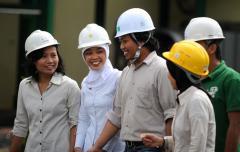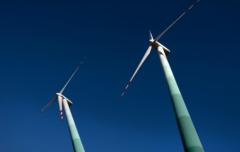Doubling the global rate of improvement in energy efficiency by 2030? “Si, se puede!”
Director General Odón de Buen was one of seven global leaders in the sustainable energy movement honored in July at Seven for 7 – a celebration by SEforALL and Ashden to recognize individuals and efforts leading and driving action on SDG7.
Can we meet the target under Sustainable Development Goal 7 of doubling the global rate of improvement in energy efficiency by 2030? In México, we answer: “Si, se puede!” (Yes, we can!).
How? With technology already on the market that helps deal with the growing need for energy services that use less and less energy. Most new appliances that provide energy services not only have higher and increasing levels of efficiency, but they also have tools that enable them to operate when they are needed and for the right amount of energy. With this technology, we can have the same levels of lighting, cooling, heating and mobility using less than half of the energy per unit of service compared to 20 years ago.
This is already happening in México. Technological changes and public policies have reduced the energy intensity of the residential sector by 45% and per-capita use by 20% in 20 years. During this period, Mexican families and taxpayers have saved more than $40 billion on their energy bills. More affordable appliances are also enabling them to use more energy services.
But technology by itself is not enough. We need government policies that take advantage of these new technologies, beginning with energy efficiency standards that raise the bar for products coming onto the market. México has used the authority of the National Commission for the Efficient Use of Energy (CONUEE) to great advantage. Over the past 25 years, it has issued 32 mandatory EE standards for products and systems based on best international practices. CONUEE also coordinates a system for complying with the standards, using 72 testing laboratories and 10 certification organizations, all of which are accredited under international standards. In addition to enhancing the performance and quality of products and services, these standards are a key ingredient for the finance and feasibility of energy efficiency programs since they greatly reduce technical uncertainty and transaction costs.
But neither technology, standards and institutions are enough. We also need skilled and committed individuals at all levels in government and business who are in this for the long run. In other words, we need leaders – many of them – with a vision and understanding of technology, management and policies that can drive long-term positive change.
Leadership also means sharing and promoting lessons learned, both within and beyond our national borders. As was highlighted at the SEforALL Forum across the world, we’re seeing a growing cohort of government ministers, CEOs and other leaders strongly committed to faster action on energy efficiency and other sustainable energy goals. We should learn from these examples and replicate them to achieve bigger scale.
Simply put, we have the technology to meet the Sustainable Development Goal of doubling the global rate of improvement in energy efficiency by 2030. But it requires leadership, technical approaches, stronger regulations, lots of data, communication and new collaborative partnerships.
So as I say, “Si, se puede!” - Yes, we can!




